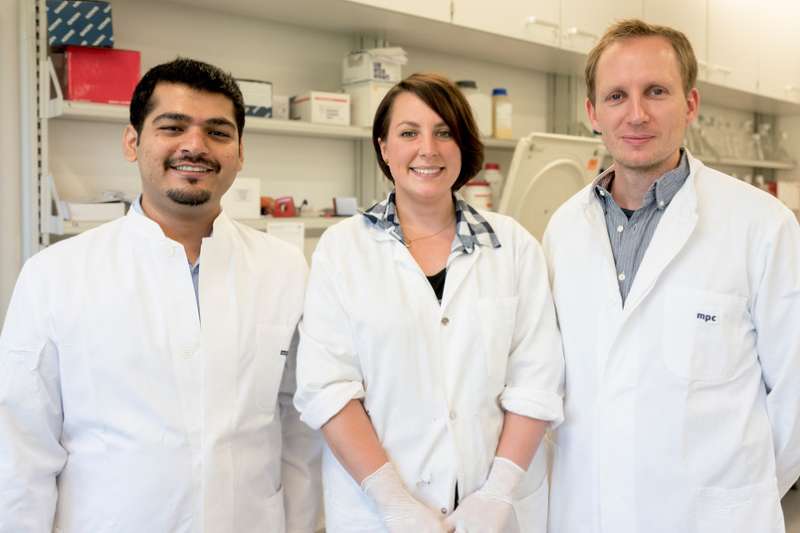Poison in the brain

Spherical structures in the nucleus of nerve cells, so-called nuclear spheres, are suspected to trigger Alzheimer's disease. A team headed by Dr Thorsten Müller from the research group Cell Signaling in Neurodegeneration has for the very first time demonstrated the presence of the presumably toxic protein aggregates in the human brain. The researchers from Ruhr-Universität Bochum have published their article in the journal Neurobiology of Aging.
The team compared brain samples from Alzheimer's patients with those of the healthy individuals in the same age group. The result: in the samples taken from Alzheimer's patients, the number of nuclear spheres was much higher than in those taken from healthy study participants.
Moreover, the group from Bochum analysed in what way nuclear spheres are generated. It was demonstrated in experiments with cell cultures that the amyloid precursor protein (APP) plays a crucial role in this process. APP has long been associated with Alzheimer's disease. The researchers observed that nuclear sphere generation preferably takes place, if the amyloid precursor protein carries no phosphate group in a specific amino acid. An APP cleavage product, moreover, is contained in the nuclear spheres.
The researchers have ascertained that decreased phosphorylation mainly occurs in those areas of the brain that have a high plaque load, typical of Alzheimer's disease. The researchers have published an article on this topic in the journal Cellular Signalling in August 2016.
"We assume that nuclear spheres are toxic and contribute to the death of nerve cells," explain Katharina Kolbe and Hassan Bukhari, lead authors of the publications. The generation of nuclear spheres may thus be a crucial mechanism for Alzheimer's disease.
"In the medium term, the results we have gained will pave the way for novel Alzheimer's hypotheses that go beyond the amyloid hypothesis, which has been studied for over 20 years," says Thorsten Müller. One should not rule out the possibility that these findings may gain crucial importance in therapeutic interventions in the long term.
More information: Katharina Kolbe et al. Extensive nuclear sphere generation in the human Alzheimer's brain, Neurobiology of Aging (2016). DOI: 10.1016/j.neurobiolaging.2016.08.016
Hassan Bukhari et al. Membrane tethering of APP c-terminal fragments is a prerequisite for T668 phosphorylation preventing nuclear sphere generation, Cellular Signalling (2016). DOI: 10.1016/j.cellsig.2016.08.007


















